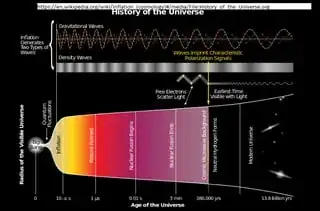Due to some of the basic principles of quantum mechanics, we have the Wolfgang Pauli exclusion principle, where two fermionic bodies cannot occupy the same quantum state simultaneously. If that is true, then how is all matter, energy, space and time of the universe being compressed into an infinitesimally small Singularity 13.8 billion years ago? Wouldn't particles/bodies be occupying the same space simultaneously in an infinitely small place? Does this mean that the Big Bang is wrong or is Pauli's exclusion principle wrong?
4 Answers
The key confusion is the idea that Pauli Exclusion prevents any two particles from occupying the same space. The actual Pauli Exclusion Principle is slightly different: it prevents any two particles occupying the same quantum state.
If the temperature is higher than the Fermi Energy, there is more than enough thermal energy to give each particle its own quantum state (which includes energy). This allows particles to stack atop each other in space, (but have different momentum and energy). Consider electron clouds which partially overlap in your everyday atom!
The Fermi temperature scales as the Fermi Energy, which in the relativistic case, scales as $L^{-1}$. The temperature of a radiation dominated (as it was, early on) universe also scales as $L^{-1}$. So as we go back in time, to smaller and smaller lengths, the Fermi Temperature will never overtake the Temperature, so the Pauli Exclusion Principle will hold true, but not matter physically. The pressure due to photons will be much larger than any degeneracy pressure.
It's important to note that much of the energy density is in Bosonic fields (photons, scalar fields, etc.) rather than Fermionic fields. And important to note that we do not necessarily know what happens when the Universe is younger than a Planck time, as our understanding of physics above this energy scale is incomplete.
- 5,156
Have you noticed that the present Big Bang model does not have a singularity ( a point) as its beginning? It has a fuzzy region instead of a point.
how is all matter, energy, space and time possible. of the universe being compressed into an infinitesimally small Singularity 13.8 billion years ago?
An original point cannot be valid mathematically when talking of quantum mechanical entities that obey the Pauli principle, as you note .
It is the reason for the present BB model. Quantum mechanics was introduced exactly because quantum mechanics imposes limitations on how space time and matter should evolve in a Big Bang.
As the quantized gravity models used are effective models, as gravity has not been definitively quantized, there is a strong ongoing research to quantize gravity formally. At present string theories allow for quantization of gravity, there are many possible ones but none has been found up to now to play the role of a theory of everything (TOE)
- 236,935
We are pretty much not aware what kind of particles existed prior to Big Bang or exactly at the moment zero of the Big Bang.
It is possible that the mass content of the universe was not in fermionic state, bosons are pretty good particles as well. It is also possible that fermionic and bosonic particles separated later and they were not what we know them today.
- 9,585
Classical G.R. becomes at best dubious in the very early universe, therefore standard cosmology does not claim the universe started infinitely small, only that at very early times it was in a configuration which was very much smaller than now and which classical physics cannot adequately model. (And for relevant info on Pauli exclusion, see answer by Alwin).
- 65,285
